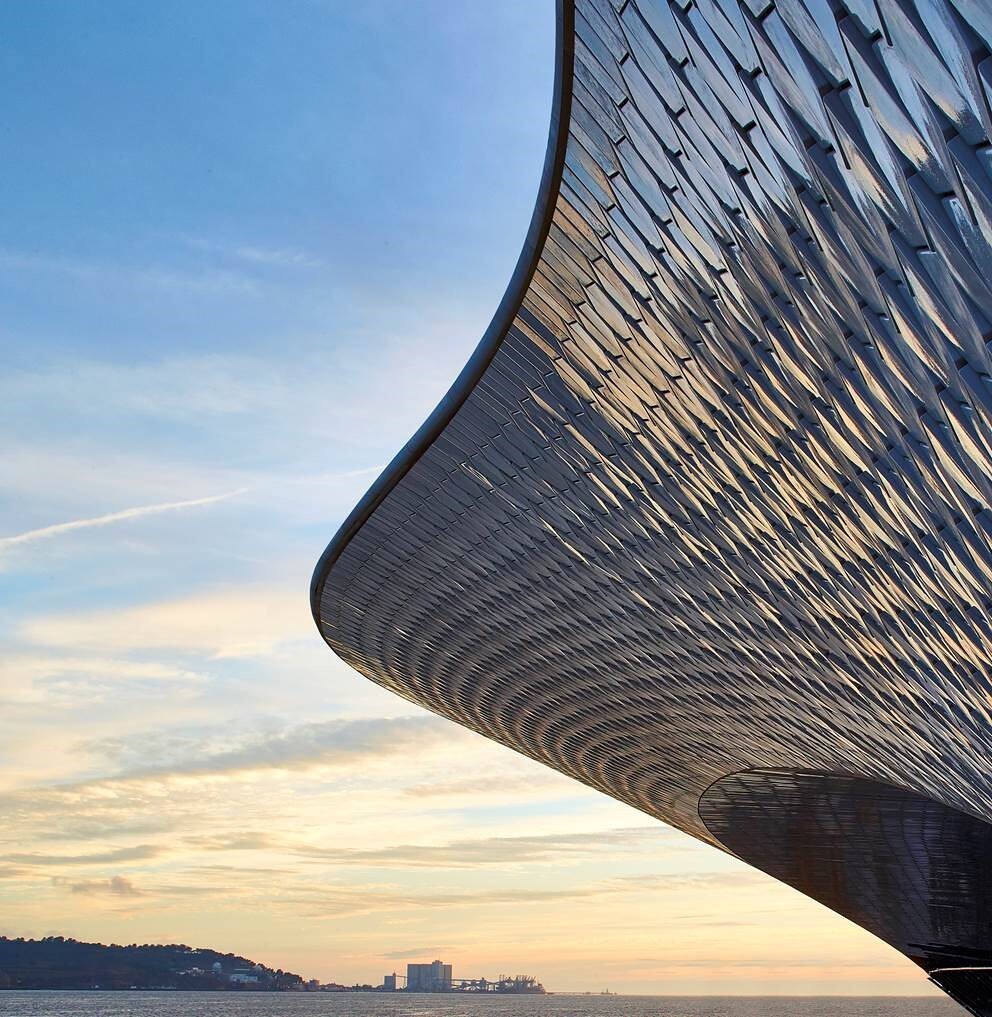October 5, 2016
On October 5 EDP Foundation will officially open MAAT, Museum of Art, Architecture and Technology on the Tagus River in Belém, Lisbon. The new building, designed by the British architect Amanda Levete (AL_A) opens to the public with a 12-hour programme that features exhibition openings, educational events, performances and music happenings. This celebration will take place on the vast EDP Foundation Campus along the Tagus River that will be the heart of an exciting urban revitalisation along one of Lisbon’s most historical waterfront neighborhoods.
The new building
Amanda Levete’s new building captures the essence of the exceptional 38,000 square-meter riverside site and its extraordinary light. The site restores the historic connections between the city and the water. A space to be appropriated by the public, visitors can walk over, under and through the building, while the undulating roof offers panoramic views towards the river and across Belém. The building creates a constantly changing place filled with aquatic reflections that interplay with the overhanging façade covered in 3D tiles, a reference to Portugal’s rich tradition of ceramics.
Inaugural theme: Utopia/Dystopia, Part I and II
To celebrate the inauguration of MAAT’s new building, the museum will present its first site-specific commission addressing the dual theme of Utopia/Dystopia: Dominique Gonzalez-Foerster. Pynchon Park.
At nearly 1000 square-meters, Pynchon Park will occupy the museum’s Oval Gallery and will be the third large-scale environment created by artist Dominique Gonzalez-Foerster, following on TH.2058 at Tate Modern (London, 2018) and Ballard Garden at De Singel (Antwerp, 2014). Bringing media, literature and dystopia together, the artist offers a fictional setting in which an extra-terrestrial has taken over the world and designed a park as a place to observe human behavior under the best possible conditions.
The second part of the Utopia/Dystopia exhibition project will be a large group show to be installed in the three exhibition galleries that complete MAAT’s new museum building. Opening in March 2017, Utopia/Dystopia Part II will feature more than 60 works by artists and architects of international background. The show will portray how the two fields represented ideas of utopia or anticipated emerging notions of dystopia since the 1970s, with a strong focus on work produced over the last five years. Participants include Archigram, Andreas Angelidakis, Kader Attia, Pedro Barateiro, James Beckett, Jordi Colomer, DIS Collective, Didier Faustino, Cao Fei, Ângela Ferreira, Yona Friedman, Michael MacGarry, OMA, Tabor Robak, André Romão, Aldo Rossi, Michael E. Smith, Jonas Staal, Hito Steyerl, Superstudio, among many others.
Opening programme and exhibitions on view
In the lead up to the official opening on October 5, MAAT is featuring an intense programme of events: the first presentation of the video Where Shapes Come From by Semiconductor (Ruth and Joe Gerhardt); the installation of a site-specific piece by Lawrence Wiener; the presentation of C’mon (modulations with two microphones and two amplifiers) by Nuno da Luz; and live AV performances such as Emerging Paradigm, by Haroon Mirza, and Supercodex by Ryoji Ikeda. Nástio Mosquito will perform Respectable Thief. The Portuguese duo Von Calhau will present a new show, and Colectivo ensemble lead by Pedro Carneiro will perform Michael Gordon’s Timbers. DJ sets feature Zebra Kats, Fátima Al Qadiri and artists from the Prince Records label.
The inaugural programme also includes the opening of two new exhibitions besides Dominique Gonzalez-Foerster’s Pynchon Park. In its Central building, MAAT presents The World of Charles and Ray Eames, organised in partnership with Barbican Centre in London. One of the main exhibitions of the 4th Lisbon Architecture Triennale, The Form of Form, takes up the Power Station’s courtyard. Also on view at MAAT Central, Second Nature stems from a research into the archive of the EDP Foundation Art Collection, taking account of current debates on the natural world and its representations. At the monumental Boiler Room, Artists’ Film International represents the 2016 iteration of the programme dedicated to exhibiting videos, films and animations produced by artists from around the world, launched in 2008 by the Whitechapel Gallery in London. The London-based Portuguese photographer Edgar Martins takes the Astray 8, also in Central building, to present Siloquies and Soliloquies on Death, Life and Other Interludes, that is a result of a long research at the Institute of Forensic Medicine of Lisbon.


